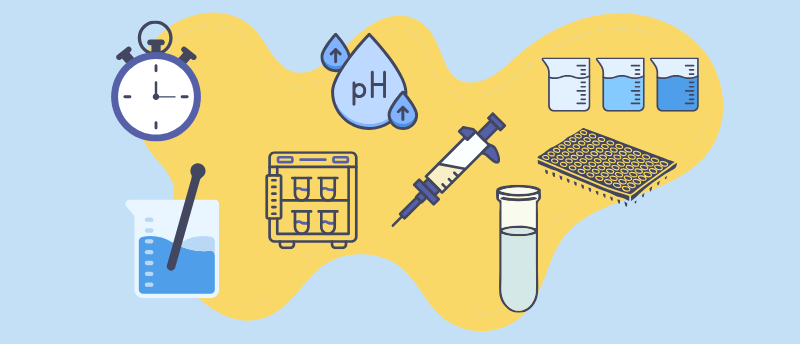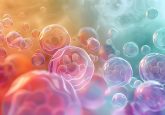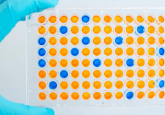Why your lab’s best investment isn’t equipment – it’s education

In her next column, Cathy argues bioanalytical laboratories need comprehensive, ongoing training programs that extend far beyond basic onboarding, emphasizing the importance of hands-on shadowing experience and detailed procedural training for both new and experienced bioanalysts. She highlights how seemingly routine lab techniques — including pipetting and sample mixing — can significantly impact assay performance and data quality.
 Catherine Vrentas
Catherine Vrentas
Bioanalytical SME
Prior to her current role, Cathy was most recently a Life Sciences Lead Associate at Booz Allen Hamilton (VA, USA), where she supported a large portfolio of federally-funded, preclinical through clinical programs in the CGT space and specializes in clinical trials and bioanalysis. Prior to this role, she was a Principal Scientist and managed a team of ~20 scientists at Thermo Fisher Scientific (VA, USA). In this role, she led the development and validation of 100+ assays to assess samples for preclinical programs and clinical trials for pharma and biotech, including work on multiple first-in-human trials for rare diseases and gene therapies. Cathy has experience in regulated immunoassays and cell-based assays for PK, ADA, NAb and biomarker applications, as well as enzymatic assays, oligonucleotide assessments, COVID-19 assays and tissue-based assessments.
Cathy received her BSc in Biochemistry and Molecular Biology from Penn State (PA, USA), a PhD in Cellular and Molecular Biology from the University of Wisconsin-Madison (WA, USA), an MBA from Longwood University (VA, USA), and an MPH in public health practice from Des Moines University (IA, USA). She has mentored over 60 scientists, students and summer interns in laboratory methods over her career and has volunteered for diverse nonprofits including the foster care system, dementia education, prison education, youth science outreach, public health, oyster restoration and health advocacy.
In the competitive world of job applications, the focus of resumes and interviews is mastery—how many methodologies you know, how many assay plates you can run, what percent efficiency you achieved, and so on. Similarly, current conventional wisdom suggests that new employees should be ready to “hit the ground running” upon starting their role, possibly after a brief orientation. With this mindset, is there any room in today’s bioanalytical workplace for training beyond entry-level employee skill development or required yearly videos?
From my experiences in both regulated and non-regulated labs, I would say, emphatically, yes. In my very earliest days in the field of bioanalysis, I transitioned from a research role in the government to a bench scientist at a GLP-compliant CRO laboratory, a formative experience that I opined on in my first column. At mid-career, certainly I knew the fundamentals of measuring and weighing, but the specifics of the GLP documentation and SOP warranted additional, focused training. Beyond that initial onboarding, however, I had the opportunity to work one-on-one with our technical trainer, Michael, early in my tenure in the role. Even though I started as a method development scientist, he took the time to work with me to learn the tools of the sample analysis trade, including electronic laboratory notebook procedures, and how to set up shadowing opportunities to observe the practices of production scientists who were running different ligand-binding methods at high throughput.
I credit much of my learning about how to develop methods that could be transferred downstream for long-term success to those early shadowing experiences. While critical reagents and appropriate assay formats are core to a successful assay, the specifics of assay conduct also have a significant impact on the quality of the overall dataset. It is important for the assay developer to understand the downstream workflows and equipment that will be used in sample analysis, such that assessment of comparable procedures can be incorporated into assay development test runs. Shadowing of procedures can also hone observation skills in new scientists. Indeed, one of the most important skills I developed throughout my laboratory career was the power of observation, both on the macro level (e.g., patterns across raw signals over many runs) and the micro level (e.g., unusual precipitates at the bottom of a critical reagent tube).
In addition to serving as a training approach, assay shadowing can also be a means of investigating potential variables in the event of variability across days and analysts, or understanding differences in assay performance upon transfer across laboratories or lab groups (i.e., transfer from an assay validation to a sample analysis work group). Elements like temperature gradients in an incubator, issues with plate sealing or delays in processing that could contribute to a drift in assay signal across a plate or across a set of plates are not always easy to envision from reviewing an assay protocol on the computer. Labs can even consider an assay training and/or troubleshooting checklist to document elements such as:
![]()
Tube type and use: Low bind, polypropylene, cap type, thickness, fill volume.
![]() Pipetting strategy: Reverse vs forward pipetting, automatic vs manual pipettors, single-channel vs repeater pipetting, potential loss of sample through splash, tip type, viscosity of pipetted solution, volume of calibrator and QC preparation, comparison of robotic vs manual pipetting, technique for dispensing
Pipetting strategy: Reverse vs forward pipetting, automatic vs manual pipettors, single-channel vs repeater pipetting, potential loss of sample through splash, tip type, viscosity of pipetted solution, volume of calibrator and QC preparation, comparison of robotic vs manual pipetting, technique for dispensing
![]()
Mixing strategy: Impact of fill volume, speed and duration of mixing, visual observation of sample homogeneity, settling time before sample aliquoting
![]()
Dilution strategy: Volume of sample used to prepare the dilution, Tube type and volume used for intermediate dilutions, number of intermediate dilutions; in the case of the use of surrogate matrix, consider the impact of surrogate matrix composition and hold time prior to plating on signal strength
![]()
Plating: Order and speed of adding samples to plate (i.e., top to bottom vs left to right, total time the plate is dry), buffer temperature at time of addition, techniques for plate sealing
![]()
Plate incubation: Specific speed, incubator humidity, potential for temperature gradients (especially for assays)
![]()
Washing: Single wash vs wash with a rotation, Approaches for wash buffer removal, Consistency of wash buffer removal
![]()
Plate reading: Total time taken to add read buffer as appropriate, time between buffer addition and plate read, Order of plate read with multiple plates and the impact on assay signal and performance.
While many of these elements can and should be documented in the assay protocol and bench sheet — such as the wash program specifics on an automated washer, the mixing speed on a rotating mixer, and the timing of buffer addition — the list above captures many subtleties that can be important for both training and troubleshooting. While in an ideal case, assays will be highly robust to small variations in temperature or shaking speed, the need to detect complex molecules at high sensitivity can push assays to their limits in terms of consistency of results. Additionally, gaining an increased understanding of what variables may be causing differences in assay signal or performance can aid in modifications that improve robustness. Overall, standardized laboratory practices can improve performance over time for assays across batches, analysts and pieces of equipment. However, the impact of standardization and shadowing is not limited to manual assays, for example, buffer handling or sample thawing procedures for assay setup on an automated handler are areas for standardization.
The importance of such details in bioanalytical lab management has continued to increase with (a) the expansion of analysis of clinical biomarkers in trials across diverse therapeutic areas; (b) the growing importance of low-protein matrices such as CSF or urine, such as the use of CSF in neurodegenerative and rare disease trials; and (c) the expansion of sample types to tissue homogenates, sputum, and other difficult-to-pipette types. Biomarker analyses often require expanded attention to details of tube type, pre-analytical handling, and even sample homogeneity. Consider, for example, the Alzheimer’s Association’s working group publications on the impact of tube type and sample collection procedures on the quantitation of CSF biomarkers for Alzheimer’s disease [1].
More columns from Catherine Vrentas:
- Mastering bioanalytical project management
- The art and science of ADC bioanalysis: a storyboard approach to assay design
- The GLP mindset
Engaged learning experiences should not be limited only to new employees. As bioanalytical scientists become more proficient, in addition to being trained on new equipment, robotic systems, and electronic platforms, do not discount specialized training on other more “routine” laboratory techniques. Exact procedures for sample mixing, transfer, and pipetting are not as simple or straightforward as they might appear on the surface. As a few examples of the impact of routine pipetting and/or mixing procedures:
- Consistency in procedures for mixing, aliquoting, and diluting reference materials can be crucial to ensure consistency of calibrator (and QC preparations) over time. With 5-to-10-year clinical trials for some therapeutic areas and modalities, it is not sufficient to rely on a single analyst to prepare your calibration curve each time. Small differences of even 10-15% across preparations could increase risk of assay failure.
- Similarly, consistency in procedures for sample dilution to ensure that sample dilutions are parallel to the dilutions that make up the calibration curve are essential for result accuracy and ISR (incurred sample repeat) success. If samples in production will be diluted at higher throughput than in validation experiments, will the dilution techniques be parallel to the calibration curve and consistent across analysts?
- As demonstrated by Fu et al., ineffective mixing, even on a vortex mixer, can be sufficient to lead to inaccurate quantitation and ISR failure [2].
Therefore, practical training that builds a skilled and consistent laboratory team can have many benefits to both personal development and study conduct. Some examples of enhanced training curriculum topics that could serve as an incentive for high-performing junior sample/production analysts who are interested in advancing their skill set and career in bioanalysis include:
- Expert preparation of bulk calibration curves and quality control samples;
- “Train the trainer”—How can they most effectively train other lab employees in a new method? This can also be a very useful training for assay development staff who will be working to transfer methods to validation and/or sample analysis groups, to make sure that knowledge is transferred smoothly. This is a skill set that is often overlooked;
- How can they train junior scientists and interns/co-op students to become proficient in pipetting, including the use and evaluation of practice activities;
- Sample dilution schemes for rare or otherwise low-volume matrices;
- How to examine trends and patterns in assay data over time;
- Recommended practices for bridging new reagents and assay lots; and
- Implementing strategies for high-throughput analysis.
Do not overlook the importance of developing an overall culture of training and learning in the bioanalytical laboratory, while ensuring that bench analysts are equipped to appropriately and accurately direct others about key technique matters. Explaining WHY certain procedures and decisions are used is a key component of the process.
Now that we’ve considered the importance of training and shadowing in the bioanalytical lab — far beyond the initial onboarding — a key question is: how can we do this effectively? In my next quarterly column, I’ll be exploring this question through an interactive interview and discussion with an experienced industry technical trainer, to provide you with practical tips and tricks on how to implement these strategies into your laboratory workflows.
Our expert opinion collection provides you with in-depth articles written by authors from across the field of bioanalysis. Our expert opinions are perfect for those wanting a comprehensive, written review of a topic or looking for perspective pieces from our regular contributors.
See an article that catches your eye? Read any of our Expert Opinions for free.





